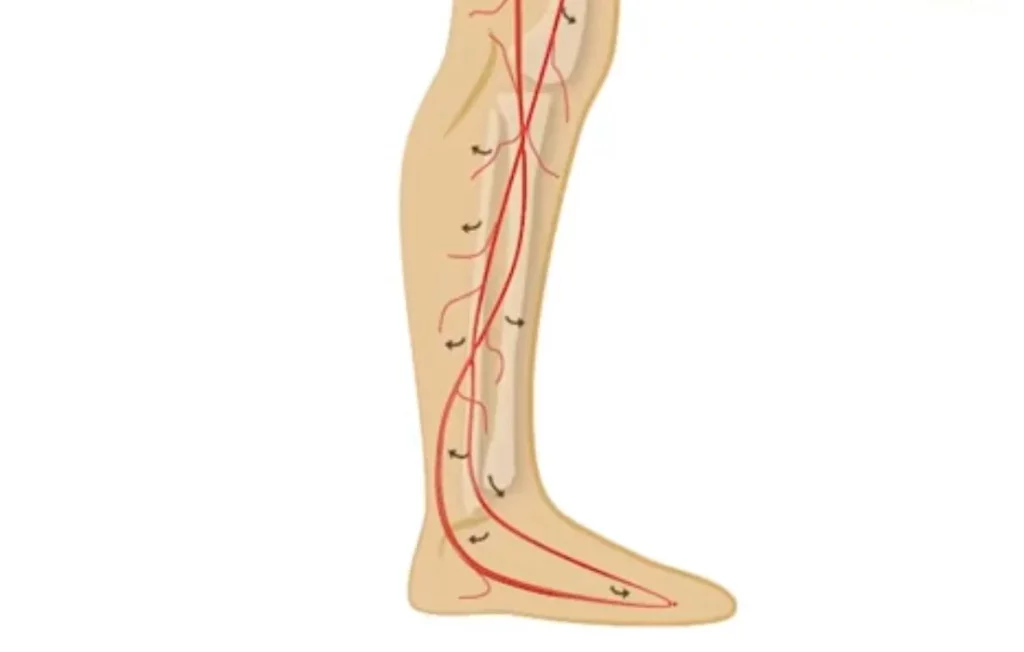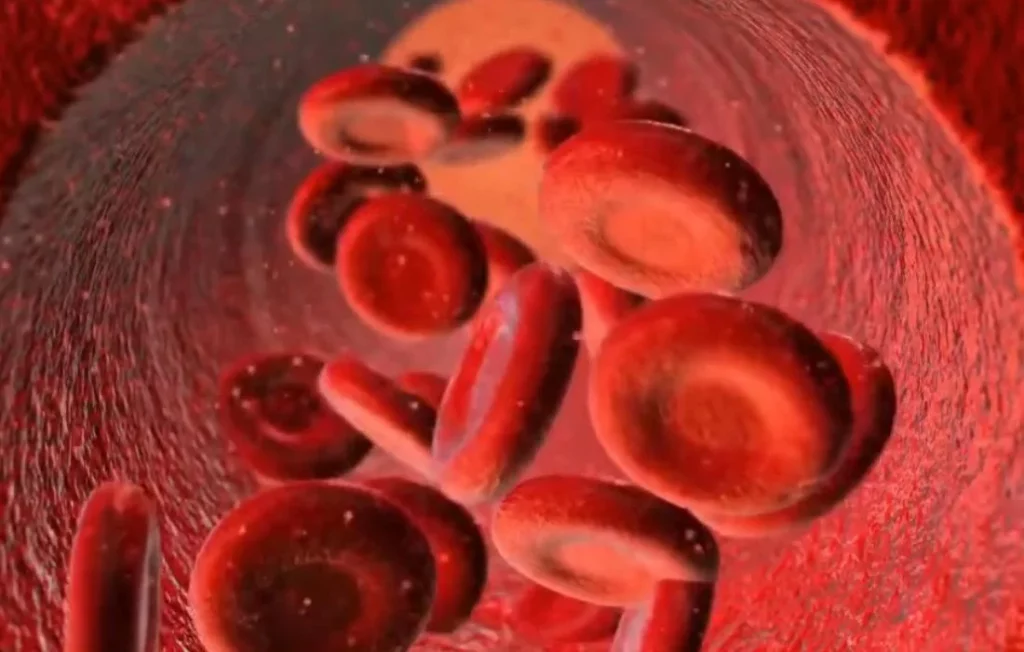If you’ve ever experienced discomfort due to poor circulation in your legs, you’re not alone. Many individuals encounter this issue at some point in their lives, and while it may not be life-threatening, neglecting it can lead to more severe health conditions. In this comprehensive guide, we will delve into the intricacies of poor circulation, its causes, symptoms, and, most importantly, effective exercises and strategies to improve blood flow to your lower extremities. We’ll also provide leg exerciser reviews and recommendations tailored to best leg exerciser for elderly seniors who may be looking for leg day exercises that are gentle yet effective in enhancing circulation and overall leg health.
Understanding Poor Circulation
What Is Poor Circulation?
When your circulatory system falters in its mission to deliver blood, oxygen, and vital nutrients throughout your body, it’s called poor circulation. This often affects your legs, feet, arms, hands, and fingers the most. Think of it as traffic congestion on your body’s internal highways, with consequences ranging from minor discomfort to potentially serious health issues. In this guide, we will explore the top leg lifts exercises and bodyweight exercises for legs that can help improve circulation in your lower extremities, alleviating discomfort and promoting better overall leg health.
Who Is Most Likely to Be Affected?
While poor circulation can affect anyone, several groups are more prone to experiencing it:
- People with Arterial Issues: Especially those with arteries supplying blood to the legs and hands.
- People with Heart Conditions: Individuals with weak hearts or blocked blood vessels leading to and from the heart are at risk.
- Persons with Diabetes: High blood glucose levels can lead to fatty deposits in blood vessels, narrowing them and reducing blood flow.
- Smokers: Chemicals in cigarette smoke thicken blood and form clots in veins and arteries, leading to circulation issues.
- Obese Individuals: Carrying excess weight puts pressure on arteries, making the heart work harder to circulate blood.
- Heavy Drinkers: Alcohol dilates veins, further hindering blood circulation.
Recognizing Symptoms of Poor Circulation
Identifying the symptoms of poor circulation is crucial for timely intervention.

These symptoms may include:
- Muscle Pain or Cramps while walking: Pain in your legs during physical activity can indicate reduced blood flow.
- Numbness or Tingling in the extremities: A sensation resembling pins and needles can signify poor circulation.
- Cold Feet: Low blood flow causes temperature fluctuations, making extremities colder.
- Swelling of the legs, ankles, or feet (oedema): Excess fluid buildup due to poor circulation can lead to swelling.
- Skin Discoloration: Affected areas may appear paler than usual.
- Varicose Veins: These twisted, enlarged veins can cause itchiness, swelling, and pain.
- Leg Ulcers: Resulting from pooled blood in the veins, leading to swelling beneath the skin.
- Other signs of poor circulation may affect other parts of the body, including cognitive dysfunction, gastrointestinal issues, and unexplained fatigue.
What Causes Bad Circulation in Legs?
Before delving into exercises to improve circulation.

Understanding the underlying causes of poor circulation is essential:
- Damaged Veins: Varicose veins, characterized by gnarled, engorged veins, impede blood flow.
- Diabetes: High blood glucose levels decrease blood vessel elasticity and cause narrowing, hindering blood flow.
- Obesity: Excess weight exerts pressure on veins, leading to varicose veins, fatty deposits, and potential diabetes.
- Raynaud’s Disease/Phenomenon: Triggered by anxiety, stress, or cold temperatures, it narrows blood vessels in fingers and toes, cutting off circulation.
- Blood Clots: Various causes, such as injury or prolonged immobility, can lead to clots blocking blood flow.
- Tobacco: Smoking narrows blood vessels, increases plaque buildup, and damages the circulatory system, raising the risk of peripheral artery disease, heart attack, and stroke.
Effective Exercises for Better Circulation in Legs
Incorporating these exercises into your daily routine can contribute to better circulation in your legs, reduce the risk of discomfort, and enhance overall leg health. As always, it’s important to start slowly, especially if you’re new to exercise, and consult with a healthcare professional if you have any underlying health concerns. Now that we’ve explored the causes and symptoms.

Let’s focus on exercises that can significantly improve circulation in your legs:
Walking
- Walking is a low-impact cardiovascular exercise that promotes circulation throughout your entire body, including your legs. It helps pump blood from your legs back to your heart, reducing the risk of fluid buildup and swelling.
- The rhythmic contraction and relaxation of leg muscles during walking assist in pushing blood upward, which is especially beneficial for those who experience prolonged periods of sitting or standing.
- To maximize its benefits, aim for brisk walking, which increases heart rate and circulation. Walking outdoors in natural surroundings can also enhance the overall experience and encourage consistent participation.
Leg Swings
- Leg swings are a dynamic stretching exercise that promotes blood flow and flexibility in the legs. They are particularly helpful for loosening up stiff leg muscles and joints.
- This exercise can be done virtually anywhere, making it a convenient choice for improving circulation throughout the day.
- Leg swings also activate the hip muscles and engage the core, contributing to better overall lower-body mobility and stability.
Foam Rolling
- Foam rolling is a self-myofascial release technique that uses a foam roller to apply pressure to muscles and fascia. It can alleviate muscle tension, knots, and trigger points, promoting better blood circulation in the legs.
- By rolling the foam roller over specific muscle groups in your legs, you stimulate blood flow and may reduce muscle soreness and tightness.
- Foam rolling is an excellent complement to other exercises as it helps prepare your muscles for activity and enhances post-workout recovery.
Heel Lifts/Raisee
- Heel lifts, also known as heel raises, are simple but effective exercises for strengthening the calf muscles. Strong calf muscles aid in pumping blood from your legs back to your heart.
- These exercises mimic the motion of walking on tiptoes, which engages the calf muscles and promotes better circulation in the lower legs.
- Heel lifts can be particularly helpful for individuals who experience swelling or discomfort in the lower legs and ankles.
Squats
- Squats are compound exercises that target the muscles of the lower body, including the quadriceps, hamstrings, and glutes. They enhance overall lower body strength and promote circulation.
- The act of squatting and standing back up requires the leg muscles to contract, effectively increasing blood flow to the lower extremities.
- Squats are versatile and can be incorporated into various workout routines to improve leg strength and circulation.
Yoga
- Yoga provides a holistic approach to improving leg circulation. Poses like Downward-Facing Dog, Legs Up the Wall, low lunges, and the chair pose all encourage blood flow to the legs while also promoting relaxation and flexibility.
- The combination of stretching, deep breathing, and mindful movement in yoga helps reduce muscle tension and encourages blood circulation throughout the body.
Improving Circulation While Seated or Lying Down
These seated or lying-down exercises are especially valuable for individuals with limited mobility, such as those who are bedridden or have mobility challenges. Incorporating these exercises into daily routines can contribute to better leg circulation, reduce the risk of discomfort, and support overall leg health:
1. Ankle Pumps:
Ankle pumps are simple yet effective exercises for promoting blood circulation in the legs, particularly in the feet and ankles. They are beneficial for individuals experiencing symptoms such as swelling (edema) or discomfort in the lower extremities.
How to perform ankle pumps:
- Sit or lie down with your legs straight and slightly apart.
- Point your toes upward, flexing your ankles, and hold this position for 3 to 5 seconds.
- Then, point your toes downward, as if pressing a car pedal, and again hold for 3 to 5 seconds.
- Repeat this alternating motion, moving your ankles up and down, for several minutes.
Ankle pumps help activate the calf muscles’ pumping action, aiding in the return of blood from the feet towards the heart. This can alleviate swelling and discomfort associated with poor circulation.
2. Calf Stretches:
Calf stretches performed while lying down can improve leg circulation and help alleviate tightness in the calf muscles. This exercise is particularly useful for individuals who may have limited mobility.
How to perform calf stretches:
- Lie on your back with your legs extended.
- Lift one leg straight up toward the ceiling while keeping the other leg flat on the ground.
- Grasp the back of your calf with both hands and gently pull the raised leg closer to your chest.
- Hold the stretch for about 30 seconds, feeling the stretch in your calf muscle.
- Release and repeat the stretch three to five times on each leg.
Calf stretches help enhance flexibility and blood circulation in the lower legs, reducing the risk of muscle tightness and cramps.
3. Ankle Rotations:
Ankle rotations are gentle exercises that can be performed while sitting or lying down. They are excellent for maintaining joint mobility in the ankles and encouraging blood flow to the lower extremities.
How to perform ankle rotations:
- Sit in a comfortable position or lie down with your legs extended.
- Lift one foot slightly off the ground.
- Rotate your ankle in a clockwise direction ten times, and then rotate it counterclockwise ten times.
- Repeat this rotation on the other ankle.
Ankle rotations can help prevent stiffness and improve circulation in the ankles, which is essential for overall leg health.
The Bottom Line
Prioritizing leg circulation is essential for relieving discomfort and preventing more severe health issues. While these exercises can improve circulation, it’s crucial to consult a healthcare professional if you experience symptoms frequently, as poor circulation may be a sign of an underlying, potentially life-threatening condition.
In Conclusion
Prioritizing leg circulation is crucial for finding relief from discomfort and preventing more severe health issues. While these exercises can work wonders, it’s essential to consult a healthcare professional if you regularly experience symptoms of poor circulation, as these may signal an underlying, potentially life-threatening condition. In addition to the top leg lifts exercises and bodyweight exercises for legs, we’ll also explore the benefits of maximizing testosterone production through leg exercise and incorporating effective dumbbell leg exercises into your routine for improved leg health and overall well-being.
Disclaimer:
This article provides general informational guidance and is not a substitute for professional medical advice. Your actions based on this information are taken at your own risk and responsibility. Always consult a healthcare provider for personalized guidance tailored to your unique circumstances.

Chris David (Auther)
With my pen as my compass, I embark on a thrilling odyssey through the intricate landscape of health and fitness. In each blog post, I unveil the enigmatic realms of well-being, weaving together evidence-based wisdom, practical counsel, and a sprinkle of motivational stardust to illuminate your path toward boundless vitality and unwavering strength.
